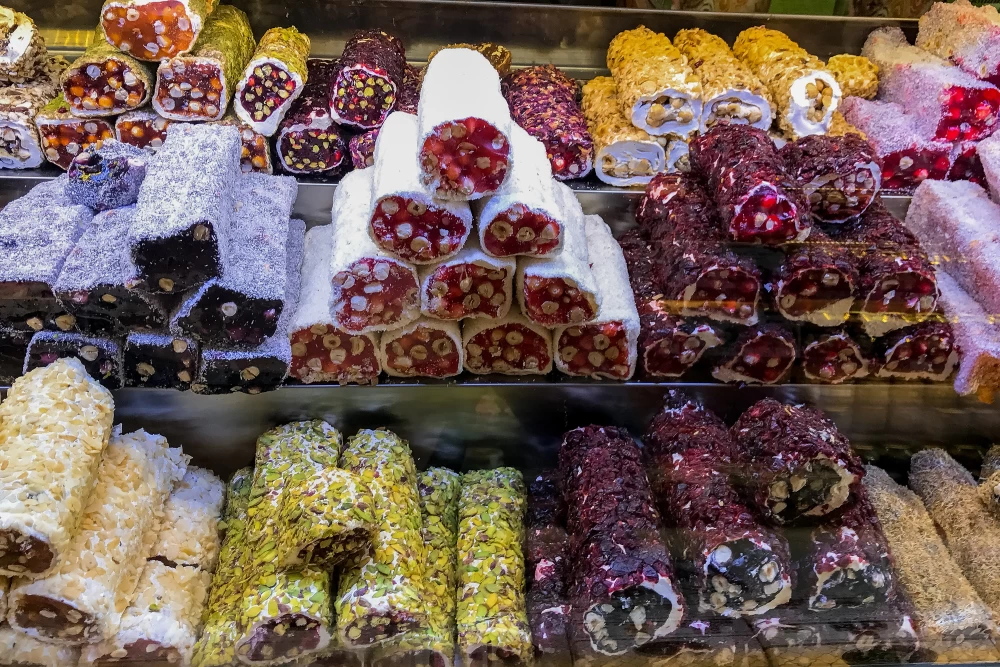
- 25th November 2023
Table of Contents
- 1. Brain Chemistry: The Sugar-Happiness Connection
- 2. Blood Sugar Regulation and Energy Boost:
- 3. Emotional Comfort: The Ritual of Indulgence
- 4. Endorphin Release
- 5. Texture and Sensory Pleasure: The Mouthfeel Effect
- 6. Cortisol Regulation: Stress Reduction through Sugar
- 7. Evolutionary Perspective: Seeking Caloric Density
The allure of sweet delights transcends cultural boundaries, making them a universal go-to for comfort. Behind this seemingly simple pleasure lies a fascinating interplay of biology, psychology, and sensory experiences. In this blog, we'll unravel the science-backed reasons why sweet treats are not just indulgences but serve as your ultimate comfort food.
1. Brain Chemistry: The Sugar-Happiness Connection
Sweet delights trigger the release of neurotransmitters like serotonin and dopamine in the brain. Serotonin, often referred to as the "feel-good" neurotransmitter, contributes to mood regulation and a sense of well-being. Dopamine, associated with reward and pleasure, creates a positive reinforcement loop, making you crave the joy associated with sweet indulgences.
2. Blood Sugar Regulation and Energy Boost:
Consuming sweet treats provides a quick energy boost, thanks to the rapid conversion of sugars into glucose—the primary energy source for the brain and muscles. However, this surge in energy is often short-lived, leading to a subsequent drop in blood sugar levels. While this drop may seem counterproductive, it triggers signals to the brain to seek more glucose, creating a cycle of reaching for sweet comforts.
3. Emotional Comfort: The Ritual of Indulgence
The act of enjoying sweet delights often involves rituals and associations with positive emotions. Whether it's a favorite childhood treat or a special dessert shared with loved ones, these emotional connections contribute to a sense of comfort. The brain forms memories around these experiences, creating a link between sweet treats and feelings of joy and security.
4. Endorphin Release
Sweet treats stimulate the release of endorphins, the body's natural painkillers and mood elevators. This endorphin release contributes to the pleasurable sensation often associated with indulging in sugary delights. Over time, the brain begins to crave this heightened state of well-being, reinforcing the desire for sweet comfort.
5. Texture and Sensory Pleasure: The Mouthfeel Effect
The sensory experience of consuming sweet treats plays a significant role in their comfort appeal. The combination of textures—crispy, creamy, gooey, or chewy—activates various receptors on the tongue and in the mouth. This sensory stimulation intensifies the overall pleasure of the eating experience, creating a comforting sensation that goes beyond mere taste.
6. Cortisol Regulation: Stress Reduction through Sugar
Sweet treats, particularly those high in sugar, have been shown to temporarily reduce the production of cortisol, the stress hormone. While the calming effect is temporary, the association between sugar and stress relief may explain the inclination to turn to sweet indulgences during times of emotional discomfort.
7. Evolutionary Perspective: Seeking Caloric Density
From an evolutionary standpoint, humans are wired to seek out foods with higher caloric density for energy storage. In the ancestral environment, where food scarcity was common, the ability to store energy efficiently was a survival advantage. Sweet foods, often rich in sugars and calories, became prized sources of energy. While our modern environment has shifted, our innate preference for sweet tastes remains, contributing to the comfort we find in sugary delights.
The comfort derived from sweet delights is a complex interplay of biological, psychological, and evolutionary factors. Understanding the science behind this phenomenon provides insights into why sugary treats hold such a special place in our hearts. While indulging in moderation can bring genuine comfort, it's essential to be mindful of the long-term impact on health. Balancing the pleasure of sweet treats with a well-rounded, nutritious diet is key to enjoying the comfort without compromising overall well-being.
